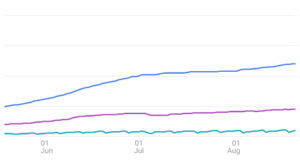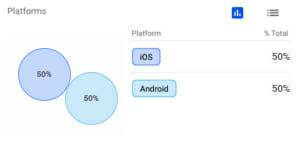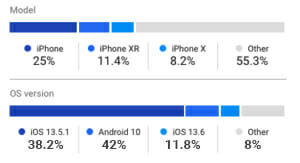Welcome back! I hope you enjoyed Part 1, which gave three big tips for new Mobile Product Managers. If you haven’t read it yet, I strongly urge you to check it out! Without further ado, let’s jump into the next set of tips:
#4 – Test Your App on the Edge Cases
“A user with max screen zoom and max text enlargement on the smallest iPhone screen size? That’s an edge case!”
Surely this particular user isn’t going to blast you on Twitter and Reddit and leave a scathing app store review, which will probably get highlighted in your app store listing, all because they can’t check the box to accept your Terms & Conditions as it has now been pushed off the screen and therefore the user cannot create an account. I am here to tell you that they absolutely, unequivocally will do all those things, and you will have a very bad day. My team has a pretty busy job testing all the enhancements we put into every release, so I took it upon myself to spot check for things like this when performing acceptance testing (you are testing your product before it ships, right?).
Mobile PM Pro Tip
Turn all the accessibility settings on your mobile device up to 100% (yes, that means both the text enlargement and screen zoom simultaneously) and then try to follow the critical path of your app. Will 80% of users consume your app this way? Probably not. However, you will now have a very clear understanding of where the issues exist, and you can add them to your backlog and start prioritizing the most glaring concerns.
Bonus Points
Utilize a device farm and some automated testing to generate screenshots or videos going through the critical path at the smallest and largest screen sizes for that platform. You don’t have to check these before every release, but you should ideally do it every time the UI is changed. Here are some large/small phones for reference:
- iPhone 11 Pro Max, 6.5” display
- iPhone SE, 4.7” display
- Samsung Galaxy Note 9, 6.4” display
- Samsung Galaxy S7, 5.1” display (technically Android phones can get as small as 2.5”, but you do have to draw the line somewhere)
#5 – Know Your Users
This is something that should be standard practice for any Product Manager, but mobile apps provide some unique “out of the box” ways to get to know your users, but not in the “location services always on” way (that’s bad, don’t do that). There are many tools out there. To start, check out the standard analytics tools App Store Connect (iOS) and Google Play Console (Android).
Mobile PM Pro Tip
Start getting higher-level insights by connecting your apps to Firebase! Want to know what rate your user base is growing at? Check out the top of your Firebase dashboard.

Want to know what your dominant platform is? Pow!

Want to know what your user breakdown is? Bam!

Want to know how many users are still running an old operating system (see Tip #4)? Boom!

Bonus Points
As a Mobile Product Manager, you need to ask your users what they think! If you followed my advice in Tip #1, you should already have a mechanism for digesting app store reviews. However, the key is to stay consistent with your feedback collection and get it from different angles. For example, there are many strategies for measuring Product-Market Fit in addition to customer satisfaction. Based on the growth stage of your app (just released vs. widely adopted), you will want to survey and measure in different ways. Do some research, work with your marketing/engagement team, and figure out the best approach for you.
Cheat Code
Sign up for a premium competitive app tool like Appbot, App Annie, or Apptopia. These tools can unify your app data with competitor app data to give you insights into how you can better serve your users. We use several different tools at ParkMobile, since each one has their own strengths and weaknesses.
Conclusion
Well, that’s all folks! Hopefully you have found these tips useful and can start implementing them in your everyday work. If you still haven’t had enough, check out this article for a couple more tips, and keep coming back to the ParkMobile Labs blog for more content from my colleagues and I. Cheers and thanks for reading!


 Get it on Google Play
Get it on Google Play